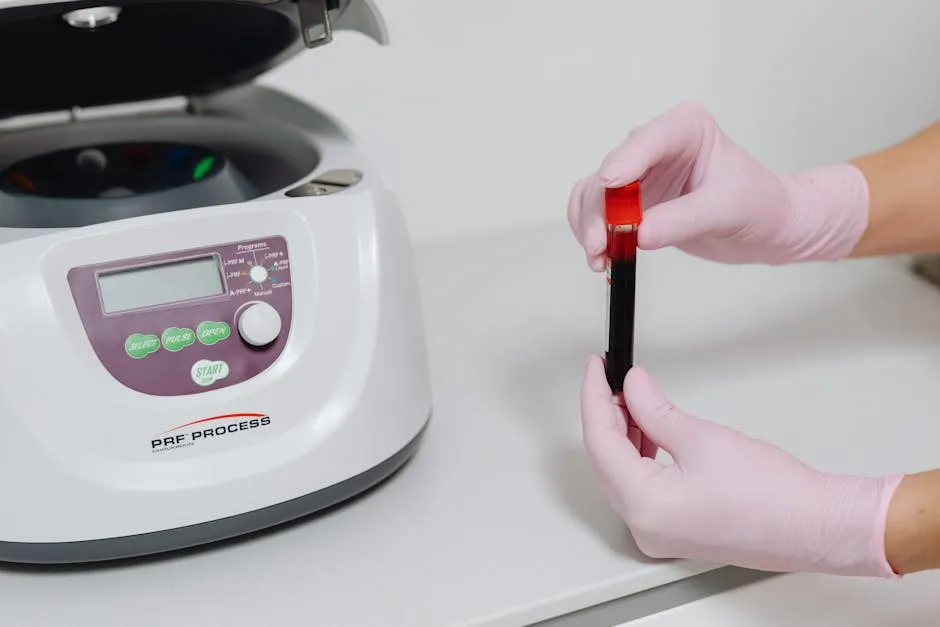Introduction
Youden’s J statistic, often referred to as Youden’s index, plays a pivotal role in diagnostic testing. This single statistic encapsulates the performance of a dichotomous test and is crucial for evaluating how well a diagnostic method can distinguish between conditions. In the medical field, accurate diagnostics can be the difference between effective treatment and misdiagnosis.
At the heart of Youden’s J statistic are two fundamental concepts: sensitivity and specificity. Sensitivity measures a test’s ability to correctly identify positive cases, while specificity assesses its capacity to recognize negative cases. Striking a balance between these two metrics is essential for any diagnostic test. After all, a test that flags too many false positives can lead to unnecessary anxiety, while one that misses actual cases can have dire consequences.
In this article, we will break down Youden’s J statistic, exploring its definition, formula, and historical context. We will also delve into its significance in evaluating diagnostic tests, providing readers with a comprehensive understanding of why this statistic matters. So, buckle up! You’re about to embark on a journey through the world of diagnostic testing, where numbers tell stories and statistics save lives. If you’re looking for a deeper dive into the subject, consider picking up Youden’s J Statistic: A Practical Guide to Diagnostic Testing.

What is Youden’s J Statistic?
Definition and Formula
Youden’s J statistic is defined as the sum of sensitivity and specificity, adjusted by one, to provide a single measure of a test’s effectiveness. The formula is straightforward:
J = sensitivity + specificity – 1
Breaking this down, sensitivity represents the proportion of actual positives correctly identified by the test. In contrast, specificity indicates the proportion of actual negatives accurately recognized. Together, these components paint a picture of a test’s reliability.
A Youden’s J value ranges from -1 to 1. A score of 1 signifies a perfect test, with no false positives or negatives. Conversely, a value of 0 indicates that the test is ineffective, essentially performing no better than chance. In some cases, a negative J value suggests that the test’s classifications may need reevaluation, as it may be misidentifying conditions.

Origin and Historical Context
The journey of Youden’s J statistic began in 1950, thanks to the work of William J. Youden, a statistician who sought to enhance the evaluation of diagnostic tests. His goal was to create a metric that combined sensitivity and specificity into a single, user-friendly figure. This innovation quickly gained traction and became a staple in medical statistics.
Over the years, Youden’s J has evolved in its application, finding relevance not only in healthcare but also in various fields requiring classification and decision-making. Its ability to succinctly summarize test performance has made it invaluable in research and clinical settings alike.
As diagnostic techniques continue to advance, understanding and utilizing Youden’s J statistic will remain crucial for ensuring that tests are not only accurate but also reliable in real-world applications. For those embarking on a journey into medical statistics, consider adding The Essentials of Medical Statistics to your reading list.

Understanding Sensitivity and Specificity
Sensitivity
Sensitivity, often called the “true positive rate,” is a measure of a diagnostic test’s ability to correctly identify those with the condition. In simpler terms, it’s how good a test is at catching the culprits—those who actually have the disease. Think of it as a superhero’s power to spot villains in a crowded room.
For example, the rapid COVID-19 tests are designed to have high sensitivity. If a person truly has the virus, a sensitive test is likely to return a positive result. This is crucial in preventing the spread of infectious diseases. If a test misses too many true positives, it can lead to outbreaks.
Other high-sensitivity tests include mammograms for breast cancer and certain types of blood tests for infections. The implications are vast. High sensitivity can save lives by ensuring that as many cases as possible are identified and treated. However, these tests may also produce false positives, meaning some people might be wrongly identified as having the condition. To further enhance your testing experience, consider using a Mammogram Preparation Kit to ensure you’re fully prepared.

Specificity
On the flip side, we have specificity, which measures a test’s ability to correctly identify those without the condition. This is the “true negative rate.” In our superhero analogy, think of it as the ability to accurately distinguish heroes from innocent bystanders.
For example, a high-specificity test could be a Prostate-Specific Antigen (PSA) Home Test. It should ideally return a negative result for anyone who is not pregnant. If a test has high specificity, it minimizes the number of false positives. This is vital in reducing unnecessary stress and medical procedures for individuals who do not have the condition.
Other tests with high specificity include certain cancer screening tests, like the prostate-specific antigen (PSA) test for prostate cancer. While these tests are excellent at confirming that a person does not have a disease, they can sometimes miss true cases, leading to false negatives. If you’re interested in testing your cholesterol levels at home, check out a Home Cholesterol Test Kit for peace of mind.

The Balance Between Sensitivity and Specificity
Navigating the world of diagnostics often involves a balancing act between sensitivity and specificity. Choosing the right test depends on the context. For instance, in early disease detection, you might prioritize sensitivity to catch as many cases as possible. However, in situations where a false positive could lead to significant anxiety or unnecessary treatment, specificity may take precedence.
This trade-off is beautifully illustrated by the Receiver Operating Characteristic (ROC) curve. The ROC curve plots the sensitivity against 1-specificity for various threshold settings of the test. The area under the ROC curve (AUC) gives a sense of the overall accuracy of the test.
This is where Youden’s J statistic steps in! Youden’s J provides a single measure of a test’s performance, calculated as:
J = sensitivity + specificity – 1
The closer the value is to 1, the better the test performs in distinguishing between those with and without the condition. This statistic helps to optimize the cut-off point on the ROC curve, ensuring that the test balances sensitivity and specificity effectively.
In summary, understanding sensitivity and specificity is crucial for selecting the right diagnostic tests. They both play vital roles in ensuring accurate disease detection while minimizing unnecessary anxiety and interventions. As we explore further, you’ll see how Youden’s J statistic can provide a clear path through this maze of metrics.

Maximum Value and Interpretation
Youden’s J statistic is a valuable tool for assessing the performance of diagnostic tests. Its maximum value, 1, indicates a perfect test, meaning it identifies all true positives and true negatives without error. This is the golden standard every diagnostic test aspires to achieve. When the J value approaches 0, it reveals a test that is barely better than random guessing. Essentially, this means the test is ineffective in distinguishing between those with and without the condition.
But what about negative values? Yes, they exist! A negative J value suggests something is amiss. It typically indicates that the test is misclassifying cases, flipping positives into negatives and vice versa. Such results call for a serious reevaluation of the test’s methodology or criteria.
In diagnostic terms, higher J values reflect better test performance. A J value close to 1 means good sensitivity and specificity. Conversely, values hovering near 0 suggest the test is not fit for purpose. Negative values? Well, they’re a red flag you can’t ignore!

Practical Application in Diagnostic Tests
Youden’s J statistic is not just theoretical; it has real-world applications in medical diagnostics. Let’s paint a picture with an example: consider a new blood test for diabetes. Researchers run the test on a group of participants, measuring both sensitivity and specificity. They calculate the J statistic and find a value of 0.85. This high score indicates the test performs excellently, correctly identifying most diabetic and non-diabetic individuals.
Now, flip the coin. Suppose another test for a rare genetic condition yields a J value of 0.2. This low score signals that the test isn’t reliable. It misclassifies healthy individuals as having the condition, potentially leading to unnecessary anxiety and follow-up tests.
In the world of diagnostics, Youden’s J acts as a guiding star. It helps clinicians make informed decisions about which tests to use and when to trust the results. With the stakes this high, relying on a clear measure like Youden’s J can save both time and lives.

Limitations of Youden’s J Statistic
Youden’s J statistic, while valuable, isn’t without its flaws. First off, it gives equal weight to sensitivity and specificity. This can be a problem when the consequences of false positives and negatives vary significantly. For example, in cancer screening, a false negative could be fatal, while a false positive might lead to unnecessary anxiety.
Moreover, Youden’s J assumes that the test’s performance is consistent across different populations. In reality, factors like age, gender, or underlying health conditions can skew results. A test might perform well in one demographic but poorly in another.
Additionally, Youden’s J is often less informative when dealing with multiclass problems. It shines in binary classifications, but when multiple classes are involved, the statistic can be misleading. In such situations, other metrics like the F1 score or Matthews correlation coefficient might provide better insights.
So, what alternatives exist? Metrics like the area under the ROC curve (AUC) can provide a more comprehensive evaluation. The AUC considers the entire curve and accounts for varying threshold settings, providing a broader perspective on model performance. If you’re interested in diving deeper into medical statistics, Practical Statistics for Medical Research is a must-read!

Advanced Concepts Related to Youden’s J Statistic
Informedness and DeltaP
Informedness takes Youden’s J statistic a step further. It quantifies the probability of making an informed decision rather than a random guess. Essentially, it’s a way to assess how well a diagnostic test performs in real-world scenarios.
DeltaP, a term often associated with Youden’s J, measures the difference between the probabilities of making a correct decision when using the test versus guessing. This metric can be particularly useful in evaluating tests that have significant impacts on patient outcomes.
For instance, a test with high informedness might lead to better clinical decisions, reducing the chances of misdiagnosis. As diagnostic tests become more complex, understanding informedness and DeltaP can help clinicians select the most appropriate testing methods. If you want to stay ahead in the medical field, consider using Medical Reference Cards for Healthcare Professionals to improve your decision-making process!

Kappa Statistics and Inter-rater Reliability
Kappa statistics are essential for assessing inter-rater reliability, which evaluates how consistently different observers classify the same subjects. It’s particularly relevant when multiple clinicians interpret diagnostic tests.
Kappa relates to Youden’s J by providing insights into the agreement between raters. For instance, if two doctors independently diagnose patients using a test with a high Youden’s J, Kappa helps determine if their diagnoses align.
Understanding Kappa is crucial in clinical settings. It ensures that diagnostic tests yield consistent results across practitioners. A high Kappa value indicates strong agreement, while a low value can signal the need for further training or standardization of diagnostic criteria.
In summary, while Youden’s J statistic is a powerful tool in diagnostic testing, its limitations necessitate the use of complementary metrics. Concepts like informedness, DeltaP, and Kappa statistics enrich our understanding of diagnostic accuracy and reliability, ultimately leading to better patient care. If you’re looking for a comprehensive resource, don’t forget to check out Medical Statistics: A Practical Approach.

Conclusion
In summary, Youden’s J statistic is a vital tool in the realm of diagnostic testing. It combines sensitivity and specificity into one neat package. This single statistic provides a clear picture of a test’s overall performance. Remember, the formula is simple:
J = sensitivity + specificity – 1
A high Youden’s J value indicates a test that excels in distinguishing between positive and negative cases. On the contrary, a low or negative value suggests that the test might need a serious rethink. Essentially, it helps clinicians and researchers choose the best diagnostic tests for their needs.
The significance of Youden’s J statistic cannot be overstated. It enhances the accuracy of diagnostic testing. This accuracy is pivotal in making informed medical decisions, minimizing misdiagnoses, and ultimately saving lives. A high Youden’s J value is akin to a stamp of approval, showcasing a test’s reliability.
As you dive into your own research or clinical practice, consider applying the knowledge of Youden’s J statistic. When evaluating diagnostic tests, don’t just look at sensitivity and specificity separately. Instead, use Youden’s J to get a comprehensive overview. This approach will undoubtedly lead to better clinical outcomes and more precise diagnostics. For those looking to enhance their understanding, Data Science for Medical Professionals is a fantastic choice!
So, embrace this powerful statistic! Whether you’re developing a new test or selecting between existing options, let Youden’s J guide your decisions for improved health outcomes. Understanding the role of inferential statistics vs descriptive statistics in data interpretation can also enhance your insights.

FAQs
What is the ideal value for Youden’s J statistic?
The ideal value for Youden’s J statistic is 1. This indicates a perfect diagnostic test. In this case, the test correctly identifies all true positives and true negatives without any errors. However, achieving a score of 1 is virtually impossible in practice. Generally, values closer to 1 signify a more effective test. A value of 0 means the test performs no better than random chance, while negative values suggest the test is misclassifying cases.
How does Youden’s J statistic differ from other metrics?
Youden’s J statistic stands apart from other metrics like AUC and F-score. While AUC focuses on the area under the ROC curve, giving a broad view of a test’s performance across various thresholds, Youden’s J hones in on a specific cut-off point. The F-score, on the other hand, considers both precision and recall but typically does not balance sensitivity and specificity equally like Youden’s J does. Each metric has its strengths, but Youden’s J uniquely combines sensitivity and specificity into a single, user-friendly figure.
Can Youden’s J statistic be used in multiclass scenarios?
Yes, Youden’s J statistic can be generalized for multiclass scenarios through a concept called informedness. Informedness estimates the probability of making an informed decision instead of a guess across multiple classes. However, the application can become complex, as it needs to account for the different classes effectively. In these situations, it’s essential to ensure that the interpretation of the statistic aligns with the specific context of the study.
What are the common pitfalls when using Youden’s J statistic?
While Youden’s J is a handy tool, it does have its pitfalls. One common mistake is assuming equal importance for false positives and false negatives. In some cases, a false negative could be far more detrimental than a false positive, or vice versa. Additionally, Youden’s J does not account for prevalence, meaning it might misrepresent test performance in populations with varying disease rates. To avoid these issues, consider the context of your testing scenario and complement Youden’s J with other metrics for a more comprehensive evaluation.
Please let us know what you think about our content by leaving a comment down below!
Thank you for reading till here 🙂
For those interested in the intersection of healthcare and statistics, you might explore healthcare workplace violence statistics in Virginia for a deeper understanding. And while you’re at it, consider adding a First Aid Kit for Home to your essential supplies!
All images from Pexels




